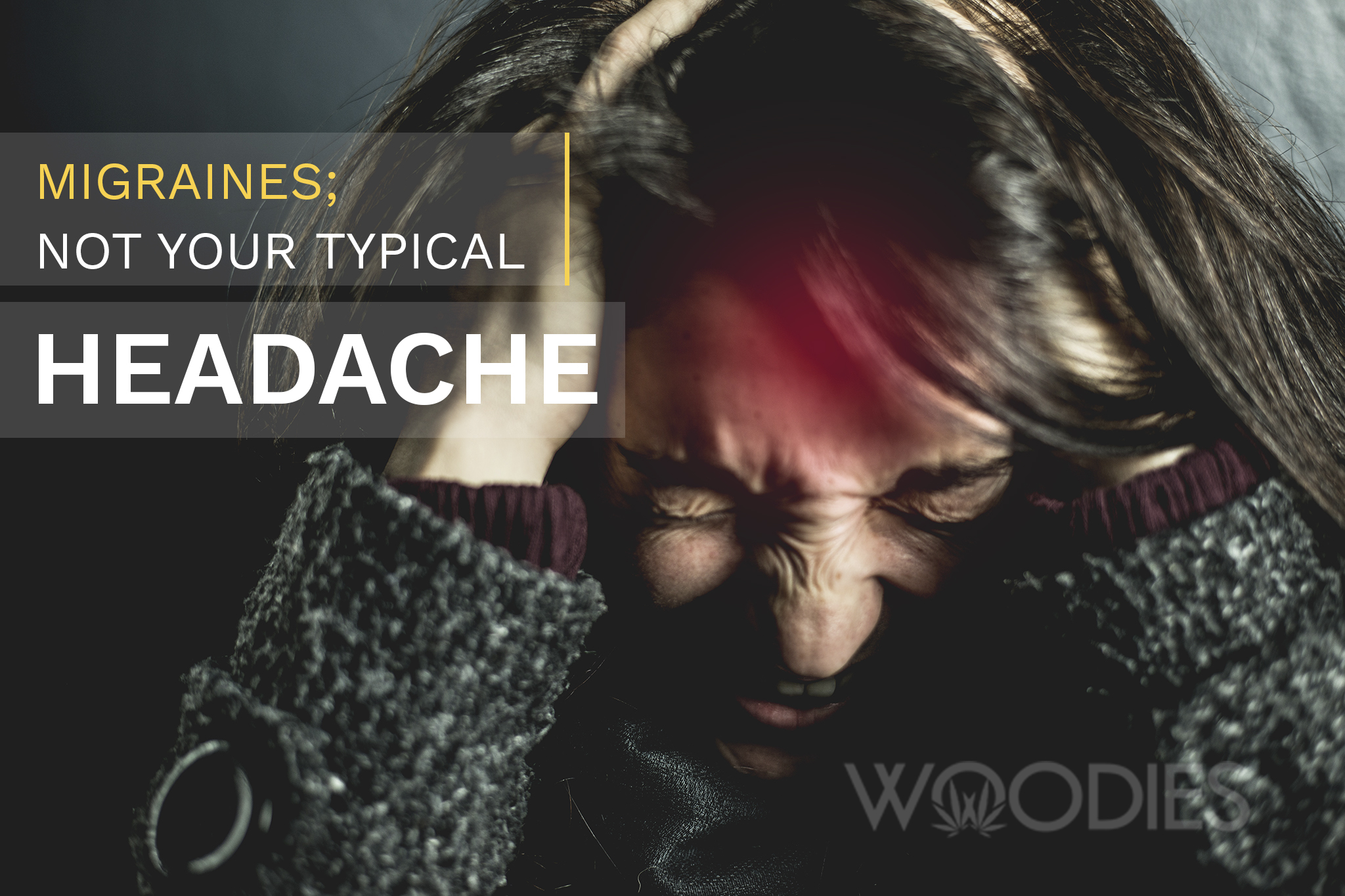
Migraines; Not Your Typical Headache
I wanted to talk about Migraines and why they are not your typical headache. Have you ever experienced a long and very painful headache and wondered what it could be? The painful headache could be a result of migraines. Migraine is a complex inherited condition of having headaches accompanied by sensory disturbance.
It is due to the instability of how your brain is dealing with the incoming sensory information. The instability can be caused by changes in the physiological process such as hunger, exercise, and sleep. However, it could be difficult to differentiate between the various types of headaches and migraines. You may experience migraines in addition to other forms of headaches. You can keep some kind of migraine diary to help you when trying to identify the specific types of headache that you may be experiencing. Generally, migraine attacks always last between 4 hours to 72 hours, and this may differ from one person to another, depending on the symptoms.

Types of migraines
Not every person experiences a typical kind of migraine. The conditions differ for each person. The World Health Organisation classifies migraines into two major categories; migraine with aura and migraine without aura.
Migraine without aura
This type of migraine was previously referred to as common migraine or hemicrania simplex. This is the most common form of migraine with a prevalence rate ranging from 70% to 90%. The frequency at which you may experience migraine without aura varies. Some people may experience it once a year, while others may experience a couple of times in a week. Some of the common symptoms associated with migraine without aura include:
- The attacks always last for a duration of 4 to 72 hours regardless of it being treated successfully or when unsuccessfully treated
- Possibility of feeling sick and you may experience some vomiting or even diarrhoea
- You may develop sensitivity to sound (phonophobia) or light (photophobia)
- You will experience a headache on one side of your head, accompanied with some pulsating or throbbing pain. This pain may end up affecting your day to day normal life and may worsen, especially if you do typical routine exercises such as climbing the stairs or the normal walks.
Migraine with aura
Together with the symptoms associated with migraine without aura, people with this types of migraine may also experience neurological symptoms like visual disturbances that develop over a period that is less than an hour, usually between 5 to 30 minutes. Some of the formerly used names for this type of migraine are classical migraine, aphasic migraine, complicated migraine, and focal migraine.
Read More: Changing Your Mindset To Reduce Stress-Induced Emotional Eating
Subtypes of Migraine
The prevalence rate of this type of migraine is 10 to 30% with an attack frequency off about once per year or several times in a year. Some of the subtypes of migraine with aura are retinal migraine, a hemiplegic migraine, and migraine with brainstem aura. Below are some of the visual disturbance that you may experience as a result of migraine with aura.
- You may start seeing coloured spots
- Having tunnel visions
- Experiencing some flashing lights
- Seeing zig-zag lines
- You may develop temporary blindness
- Seeing stars or sparkles in your eyes
Other than visual disturbances, other symptoms of migraine with aura include:
- Feeling dizzy
- Vertigo
- General weakness on one side of your body
- Body numbness
- Feelings of needles especially in your legs and arms
- Partial paralysis
- Fainting
- Memory changes
- You may also be affected in your speech and hearing.
Migraine and exercise
Those people who are prone to migraines may always find exercises to be a provoking factor for developing an attack. This has resulted in many people avoiding some of the exercises that are believed to trigger such attacks. Imagine the harm you may be doing to your body and general health when you miss out on the benefits of doing some exercises.
However, recent studies show that when you exercise, your body is stimulated hence releasing natural chemicals called enkephalins and endorphins, which are natural anti-depressants and pain controlling chemicals, respectively. What this means is that with a well-planned exercise, you can reduce your dosage on drugs that are used to prevent migraines.

Exercise as a trigger for migraine
The thought of exercises triggering a migraine attack on you must certainly be making you keep off from exercising. In such a case, below are some of the things you could be doing wrong that trigger the attack.
- Starting exercises suddenly without any prior planning. This causes your body to develop a sudden need for oxygen.
- Starting your exercise on an empty stomach. This may cause a decrease in your level of blood sugar as a result of hunger.
- Exercising without taking enough fluids leading to dehydration.
- Experiencing a minor form of accident or injury during exercise. An example is when you get hit by a ball on your head that may trigger migraines.
- Infrequently engaging in strenuous exercises that will cause your muscles to ache hence triggering an attack.
- Changing your diet and training program concurrently may also trigger an attack, especially when such a drastic change in lifestyle is not properly managed.
Choosing the right exercise
You must choose an exercise that you enjoy. Some of the recommended exercises could be aerobic exercises such as swimming, cycling, dancing, jogging, and brisk walking.
When starting on a new exercise, you should try as much to avoid exercises that are a bit more competitive and strenuous. You should do the exercise with moderate intensity, like for approximately 30 minutes a day, four times a week. It is also crucial to seek the guidance of a gym instructor who can give you good advice on what kind of exercise suits you best.
Avoid Migraines During Workout
Ensure that you gradually begin your exercise program. Among a list of important things you should do when preparing for an exercise include;
- Eat: At least an hour before you start exercising. This will give your body enough time to fully digest the food hence avoiding cases of low blood sugar level due to hunger as this may trigger developing a migraine. You can also take glucose to boost sugar levels.
- Hydrate: This is recommended before, during, and after the exercise. Normally, you will lose a lot of body fluids when you are exercising. If you don’t get to drink enough fluids, you risk getting dehydrated, which may provoke a migraine attack. Ensure to always have a bottle of water or isotonic drinks to help keep a balance of your body fluids.
- Warm-up: Having warm-up sessions like stretching before and after you exercise is very important. Warming up reduces the possibility of having muscle tensions that may trigger an attack. Ensure you take approximately 10 minutes to stretch when you begin exercising and when you finish your session.
- Wear the right clothes: It is crucial to feeling comfortable in your clothing whenever you exercise. Depending on the type of exercise, have the right footwear and clothes.
- Keep a diary: Having a migraine diary will help you keep track of your migraine attacks as well as the exercises that you have undertaken. This will help in determining which exercises always provoke an attack and which ones are healthy and do not trigger any migraine attack for you. The diary will also help you with planning. You can set a regular schedule that will go into your daily routine and lifestyle.
Conslusion
It is good to remember that in case you get to feel uncomfortable at any point during your exercise, it is only healthy that you stop. Keep in mind that there will always exist another day to continue. Ensure to take regular meals and enough sleep. Above all, it is important to always consult your doctor for advice.
If you’ve found this helpful, please share. And if you have any further questions, please let me know below and I or one of my team will do our best to provide you with answers.
Jx
Jamie Wood, Founder & CEO
Related Post
CBD Oil for Pain; Can CBD Help in the Management of Different Types of Pain? A large number of people who contact me each week ask me whether CBD or cannabidiol can help relieve their pain. Many of them have already been to their doctor and may have received a diagnosis. The complexity in treating […]

